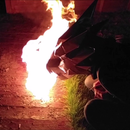Introduction: How to Win at Guessing How Many Eggs Are in the Jar...
From time to time you'll see these pop up. the contents and containers vary, but the goal is always the same: How many X in the Y?
You might think it's all down to how good you are at guessing... But let's see if we can't stack the odds in your favor...
Step 1: Have a Guess...
Before we get started. Just for Fun. Have a guess! I've taken a few photo's for you to use.
When you've settled on a number, post it in the comments. Then you can see for yourself how accurate one of these methods is! (Step 6/Option 5) We need loads of guesses to make it work. Ideally hundreds, if not thousands.
Step 2: Option 1: Count the Eggs...
If they allow you to open it up and count them out, do so! otherwise, you'd best do the next best thing:
Count all on the bottom/top layer.
Count how many layers.
Multiply together.
To make this more accurate, your best counting in several places and averaging the results.
I count 12 eggs on the top. 10 on the bottom. Average to 11.
4/5 layers.
This is an estimate of between 40, and 60 eggs.
Say 50 eggs.
Step 3: Option 2: Scale the Container and Contents...
If you know the size of the contents, and the scale of the container, you can do some maths.
In this case;
Container is an Ikea brand snap top jar. After a little research, it's a 1 litre capacity version.
The eggs are Cadbury creme, caramel, and dime, eggs. All the same size. A little research revealed that they are ~32mm x 24mm x 23mm.
Calculating an eggs volume:
It turns out that an egg can be viewed mathematically as an ovoid, or ellipsoid sphere. The maths shows that the waist offset of the egg has no impact upon it's volume. Taking its waist radius to be A, it's short polar radius to be B, and it's long polar radius to be C, the eggs volume can be taken as: (2π/3)A2(B+C). This makes our eggs 10.25ml volume.
The fill factor for ellipsoids is 0.665 in practice for a random packing. 1 litre, *0.665 fill factor,/0.01025lite per egg, gives 64.85 eggs.
We can see that the jar isn't full, we could estimate that it is 80% full. 0.8*65 is 52 eggs.
Step 4: Option 3: Logic
They had to buy the eggs. A little research shows there is only one way to buy these three types of egg together. a 250g pack.Digging deaper, the number of eggs per smaller pack can be found. Dividing this by the weight of the pack gives 11.5g per egg. 250g/11.5g is 21.73 eggs. Call the 0.73 eggs the weight of the bag itself. 21 eggs per bag.
Now we have estimated that the container can hold ~65 eggs. 65/21 is 3.09 bags of eggs. I doubt they opened a fourth bag to get the extra couple of eggs to get it to 65. So I guess it would be three bags: 63 eggs...
Now if you were filling the jar. You would eat an egg wouldn't you?... maybe two? no one would miss two... Maybe your filling the jar with someone and you give them one so they don't snitch. You can bet that it's an egg or two short of 63 in any case.
I'd estimate 61 +/- 2.
Step 5: Option 4: Weigh It
If you can accurately gauge the weight, can find the empty weight of the container, and the individual weight of each unit, you can take the total weight, minus the container weight, divide by the unit weight, and get a pretty good estimate!
Step 6: Option 5: the Wisdom of Crowds
As it turns out, the average human is awful at guessing accurately! That is, just by plucking a number out of the air. But... as a collective, we are scarily accurate!
If you can see everyone else's guesses, and can average them. The average is likely to be better than you would guess on your own. I've tested this on a few of these type of games. It works, but not as accurately as the previous options. 250 mini eggs of an actual 273. Volume measurement with fill factor gave 272. counting layers gave 180, way under.
The main issue with this method, is that the rules usually stipulate that the first person to guess correctly wins. So by waiting you may lose out on your chance to bag the right answer.
Step 7: The Answer
Before you read on. Make sure you've made a guess/ calculation.
The best solution seems to be to calculate it volumetrically, then see if you can work out how many are likely to be in there because of pack size, then find the closest multiple and take a few off for what the filler skims.
As it happens, I guessed 60 in the end, and there were 61 eggs in the jar! Not bad...
Since then, I've given away nine eggs. This leaves the 52 in the picture. So if you guessed 52 from looking at the jar, congratulations!
The same fill factor can be used for Cadbury mini eggs, and m&m's. In fact it will work with anything ellipsoid. You will need to find the volume of a singular m&m or mini egg yourself though... There is a different fill factor for spheres, cubes, and polyhedra.
If you don't know what it is, you can search for it online, or measure it experimentally. Numbers are skewed at the low end. Less than 40 can give misleading results, you want well over 50 to get a good average. Anything over 100 is ideal.











